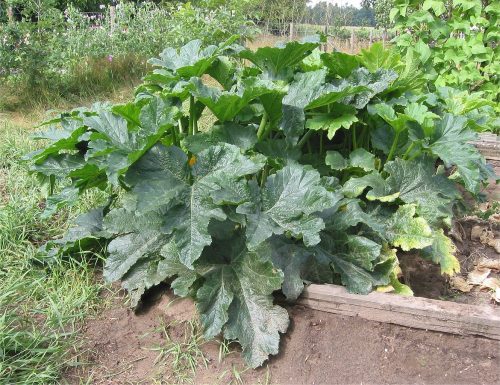Zucchini belongs to the gourd family.
Also known as:
Courgette
Baby marrow
You are viewing the mobile-adapted version of the page.
The one for tablets, laptop and desktop also provides general information, such as origin and cultivation.
Zucchini (Cucurbitaceae) belongs to the gourd family, as do pumpkin and patisson. Sow in pots (one seed per + half-liter pot) for in the warm windowsill or greenhouse. Likes a nutrient-rich soil; fertilize zucchini liberally with aged cow manure or compost. In late May, the zucchini plant can be put in the open ground. A zucchini plant needs at least one m² to spread its stems and leaves. Protect against night frost with a plastic tunnel or bell jar.
Poisonous zucchini
Anyone who collects seed from courgettes and pumpkins must ensure that there is no cross-pollination between the edible pumpkins and ornamental pumpkins or other members of the gourd family. Seed from such cross-pollination can produce plants that contain the natural toxin cucurbitacin. The outside of the melons and pumpkins shows nothing, but they taste extremely bitter. The cucurbitacins are responsible for this; substances produced by the plant to ward off herbivores. Cucurbitacins are poisonous. In 2015, a 79-year-old German died from eating a poisonous zucchini.
Bugs
Silver-gray spots with small dark green dots (poop): thrips (Thysanoptera).
Aphids generally do little harm on zucchini plants but are the transmitters of Zucchini Yellow Mosaic Virus (ZYMV).
Feeding on leaf young plants: snails and slugs.
Leaf turns yellow and bumpy; eggs on the underside of the leaf: Glasshouse whitefly (Trialeurodes vaporariorum).
Fungi & diseases
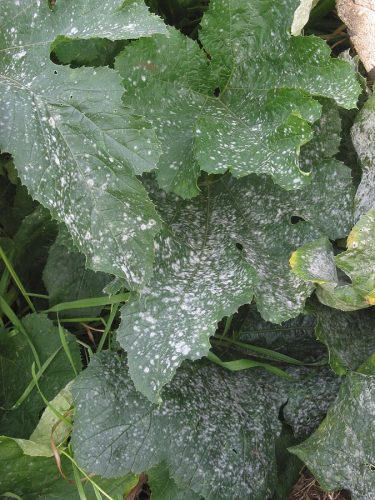
White spots on leaves; growth retarded: Powdery mildew (Ascomycete strain).
Lower leaves turn yellow, plant wilts because the roots can no longer absorb water: infestation by Black root rot of cucumber (Phomopsis sclerotioides).
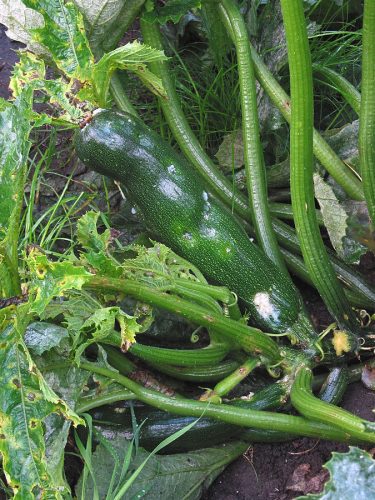
Yellow-green, circle-shaped spots on leaves; festooning lines: Zucchini Yellow Mosaic Virus (ZYMV).
Wet, rotten spots at the bottom of the stem: Fusarium foot rot (Fusarium solani).
Other
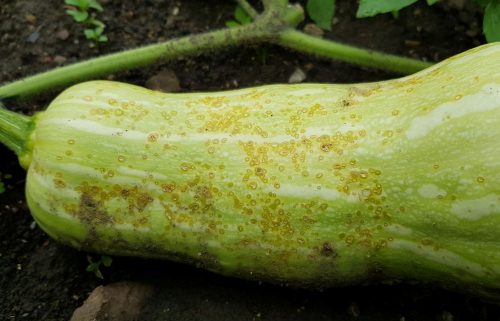
Brown spots and dents: hail damage.
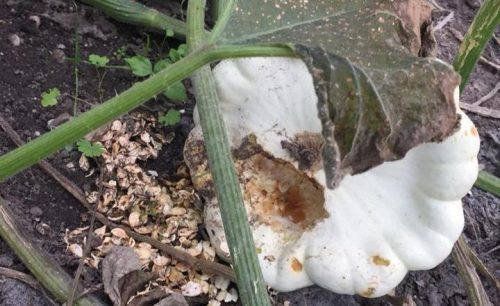
Mice eat ripe fruit.
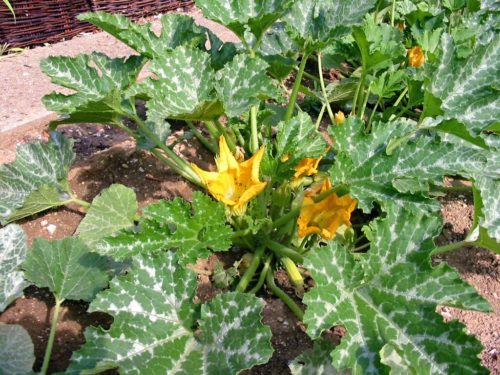
Some zucchini varieties have mottled leaves, which is characteristic of the species and perfectly normal. ‘Black beauty’ is one such species with spotted leaves.
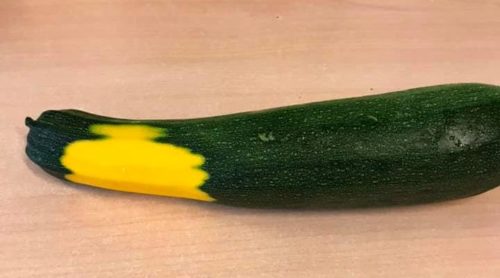
Zucchinis are not uniform in color: cross-contamination. Doesn’t happen often, but does happen.

